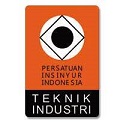TELOS Feasibility Analysis for Application Development Project using System Dynamics Approach
Abstract
Organization X reported that 75% of its application development projects from 2020 to 2023 were overscheduled, with the ABC application project being the most delayed. Field observations attributed these failures to inadequate planning and the absence of structured feasibility evaluations. This study addresses the gap by designing a dynamic feasibility model for the ABC project using a System Dynamics (SD) approach grounded in the TELOS criteria—Technical, Economic, Legal, Operational, and Scheduling. Unlike traditional static methods, the SD model captures feedback loops and interdependencies between project variables, enabling dynamic scenario simulations. Applied research methods were used to develop causal loop and stock flow diagrams, which were verified and validated via the Vensim tool. Baseline simulations yielded an average feasibility score of 7.26, exceeding the viability threshold. Among four tested scenarios, a combined intervention—adding 30%-time reserve, increasing team size, and enhancing quality control—produced the highest score of 7.35. Singular adjustments to time, cost, or quality were less effective than the integrated approach. This study demonstrates the novelty and effectiveness of applying SD to TELOS-based feasibility analysis, offering a predictive and adaptive tool for strategic project planning. The model enables proactive identification of critical phases and supports more informed decision-making, improving alignment with organizational objectives and overall project success.
Keywords: Project Feasibility, TELOS, Dynamic Systems, Decision Making, Project Management
Full Text:
PDFReferences
Project Management Institute, The standard for project management and a guide to the project management body of knowledge (PMBOK guide). 2021.
Project Management Institute, “Success Rates Rise 2017 9th Global Project Management Survey,” Newtown Square, p. 11, 2017. Accessed: Mar. 15, 2024. [Online]. Available: https://www.pmi.org/-/media/pmi/documents/public/pdf/learning/thought-leadership/pulse/pulse-of-the-profession-2017.pdf
M. Mukherjee and S. Roy, “Feasibility Studies and Important Aspects of Project Management,” International Journal of Advanced Engineering and Management, vol. 2, no. 4, pp. 98–100, 2017, [Online]. Available: https://ijoaem.org/00204-25
F.-M. E. Uzoka, B. A. Akinnuwesi, N. Oluwole, A. F. Adekoya, and O. Y. Egbekunle, “Identifying factors for evaluating software project proposals,” Int. J. Quality Engineering and Technology, vol. 6, no. 2, pp. 93–114, 2016.
M. Fryling, “Investigating the Effect of Customisation on Rework in a Higher Education Enterprise Resource Planning (ERP) Post-Implementation Environment: A System Dynamics Approach,” Journal of Information Technology Case and Application Research, vol. 17, no. 1, pp. 8–40, Jan. 2015, doi: 10.1080/15228053.2015.1014750.
S. McLeod, “Feasibility studies for novel and complex projects: Principles synthesised through an integrative review,” Project Leadership and Society, vol. 2, Dec. 2021, doi: 10.1016/j.plas.2021.100022.
H. Leon, H. Osman, M. Georgy, and M. Elsaid, “System Dynamics Approach for Forecasting Performance of Construction Projects,” Journal of Management in Engineering, vol. 34, no. 1, Jan. 2018, doi: 10.1061/(asce)me.1943-5479.0000575.
C. Swanson, Sloan School of Management, and A. C. Thorsten, A System Dynamics and Implementation of Inventory Policies. 2012.
M. Hell and L. Petrić, “System dynamics approach to TALC modeling,” Sustainability (Switzerland), vol. 13, no. 9, May 2021, doi: 10.3390/su13094803.
C. Andersson, L. Karlsson, J. Nedstam, M. Host, and B. I. Nilsson, “Understanding software processes through system dynamics simulation: a case study,” in Proceedings Ninth Annual IEEE International Conference and Workshop on the Engineering of Computer-Based Systems, 2002, pp. 41–48. doi: 10.1109/ECBS.2002.999821.
A. Fogle and Q. Yanzhen, “An Extended Simulation Model for Managing Dynamic Changes in Software Development Projects,” International Journal of Modelling and Optimisation, vol. 5, no. 5, pp. 325–331, 2015, doi: 10.7763/IJMO. 2015. V5.483.
H. Jo, H. Lee, Y. Suh, J. Kim, and Y. Park, “A dynamic feasibility analysis of public investment projects: An integrated approach using system dynamics and agent-based modeling,” International Journal of Project Management, vol. 33, no. 8, pp. 1863–1876, Nov. 2015, doi: 10.1016/j.ijproman.2015.07.002.
A. Naugle, S. Langarudi, and T. Clancy, “What is (quantitative) system dynamics modeling? Defining characteristics and the opportunities they create,” Syst Dyn Rev, vol. 40, no. 2, p. e1762, 2024, doi: https://doi.org/10.1002/sdr.1762.
R. Al-Kadeem, S. Backar, M. Eldardiry, and H. Haddad, “Review on Using System Dynamics in Designing Work Systems of Project Organizations,” International Journal of System Dynamics Applications, vol. 6, no. 2, pp. 52–70, Jan. 2017, doi: 10.4018/ijsda.2017040103.
N. Mihailovs and S. Cakula, “Dynamic system sustainability simulation modelling,” Baltic Journal of Modern Computing, vol. 8, no. 1, pp. 192–201, 2020, doi: 10.22364/BJMC.2020.8.1.12.
S. McLeod, “Interrelated Attributes of Project Feasibility: Visualising the TELOS Framework,” Jun. 2021. doi: 10.14293/S2199-1006.1.SOR-.PPT0ZRS.v1.
S. Kim, J.-S. Kim, and D.-K. Cho, “Benefit and Cost Ratio Analysis of Direct Disposal and Pyro-SFR Fuel Cycle Alternatives Using the Results of Multi-Criteria Decision-Making in Korea,” Energies (Basel), vol. 14, no. 12, 2021, doi: 10.3390/en14123509.
Z. Zakia, M. Safriani, N. Radianica, and M. Faisi Ikhwali, “Economic Feasibility Study on The Development of Irrigation Channels,” International Journal of Engineering, Science & Information Technology (IJESTY), 2022, doi: 10.52088/ijesty.v1i1.217.
M. Lestari, E. Haryani, and T. Wahyono, “Analisis Kelayakan Sistem Informasi Akademik Universitas Menggunakan PIECES dan TELOS,” Jurnal Teknik Informatika dan Sistem Informasi, vol. 7, no. 2, Aug. 2021, doi: 10.28932/jutisi.v7i2.3612.
H. Khamooshi and H. Golafshani, “EDM: Earned Duration Management, a new approach to schedule performance management and measurement,” International Journal of Project Management, vol. 32, no. 6, pp. 1019–1041, 2014, doi: 10.1016/j.ijproman.2013.11.002.
DOI: http://dx.doi.org/10.24014/jti.v11i1.37009
Refbacks
- There are currently no refbacks.
Copyright (c) 2025 Sinta Mulyani Dwi Putri, Endang Chumaidiyah, Iphov Kumala Sriwana

This work is licensed under a Creative Commons Attribution-NonCommercial-ShareAlike 4.0 International License.
Jurnal Teknik Industri
P-ISSN 2460-898X | E-ISSN 2714-6235
Published by:
Industrial Engineering Department
Universitas Islam Negeri Sultan Syarif Kasim Riau, Indonesia
Office Address:
H.R. Soebrantas KM 15.5, Tampan, Pekanbaru, Riau, Indonesia 28293
email: jti.fst@uin-suska.ac.id
Indexed by:
JTI : Jurnal Teknik Industri under a Creative Commons Attribution-NonCommercial-ShareAlike 4.0 International License.

















